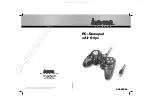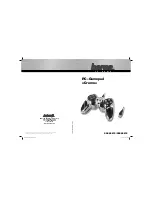
Appendix B
06/2005
Danaher Motion
The orientation is composed of two components: the master source (if there is one) and the
orientation change due to movement. On the path, if the new position command is known,
the new orientation can be calculated.
Tracking Process
The tracking process consists of two phases:
approach
(where the robot position catches
the moving frame position) and
track
(when both positions are synchronized (
<robot>.HERE
and
<moving frame>.HERE
)). The two phases are differentiated by the value of
ISMOVINGFRAMESYNCHRONIZED
. These are pure internal process phases over which
you have no control. They are shown here to provide a better understanding of the
implemented algorithms.
The robot motion is determined by
modal
values of velocity, acceleration and jerk both for
rotation and translation (
ATRAN
,
VTRAN
,
DTRAN
,
JTRAN
,
VROT
,
AROT
,
DROT
,
JROT
).
These values are taken during moving frame assignment when
<element>.MASTERFRAME
is assigned. Later, changing these values does not affect the approaching process. For
groups that do not have a kinematics model, usual kinematics values are used:
VCRUISE
,
ACC
and
JERK
. This phase is complete when both differences in velocity and position drop
below certain thresholds. Higher values of these parameters assure faster approaches. Both
robot’s position and orientation coordinates are taken into account.
A system offers two different approach algorithms. One is the
absolute tracking algorithm,
and the other is the
relative tracking algorithm
. Both are based on internal, closed
prediction-PD position loop using position and velocity differences as success criteria. Use
the absolute tracking algorithm in simple, slow-motion tracking with minimal initial distance of
the robot from the tracking object. Use the relative tracking algorithm in all other cases.
Besides differences in approaching algorithms there is also difference in the way both
algorithms are used.
Absolute Approach
Absolute tracking algorithm (
slave = 3
)
The system automatically moves the robot position (
<robot>.SETPOINT
) toward
the tracking object position (
<moving frame>.HERE
). Once synchronization is
achieved, both positions are equal.
In this algorithm, two parameters influence the approaching behavior:
<moving
frame>.FILTERFACTOR
and
<moving frame>.DAMPINGFACTOR
.
NOTE
The requirement to enter the tracking phase is that the position error
between the moving frame and the robot is less than half of the
product between acceleration and the square of the sampling period
(1/2 AT
2
).
NOTE
FITERFACTOR significantly influences the synchronization
(approaching phase) behavior. Use small values in the beginning and
increase them step-by-step until the desired results are obtained.
High values of FITERFACTOR lead to robot instability!
192 Rev
E
M-SS-005-03



































